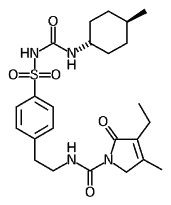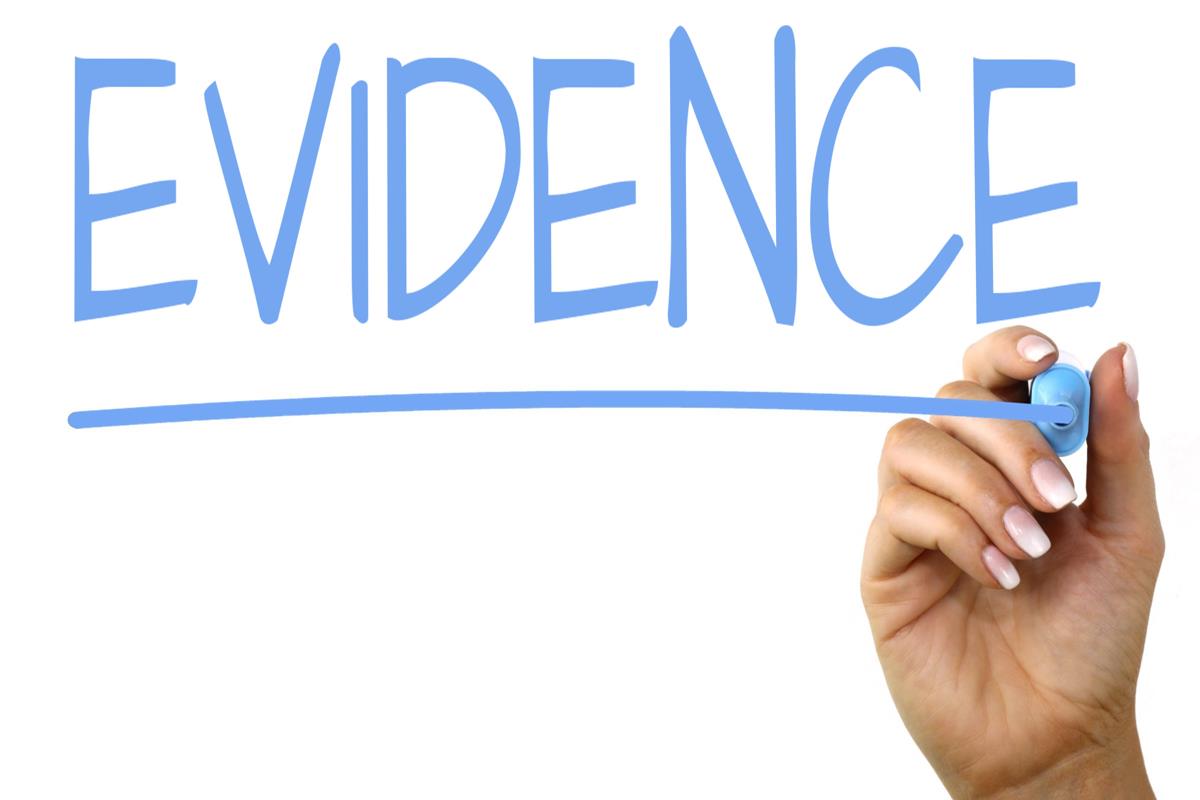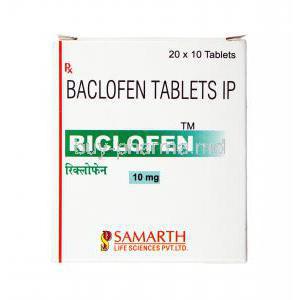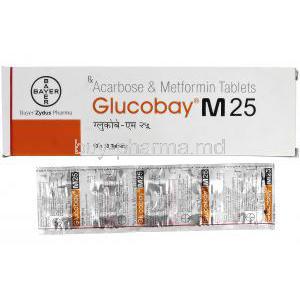Glimepiride
- I. Introduction to Glimepiride
- II. Composition of Glimepiride
- III. Uses of Glimepiride
- IV. Off-Label Uses of Glimepiride
- V. How Glimepiride Works
- VI. Dosage and Administration of Glimepiride
- VII. Careful Administration of Glimepiride
- VIII. Special Administration Considerations
- IX. Side Effects of Glimepiride
- X. Interactions with Glimepiride
- XI. Warnings and Contraindications of Glimepiride
- XII. Important Precautions when Using Glimepiride
- XIII. Overdosage and Its Management
- XIV. Storage of Glimepiride
- XV. Handling Precautions for Glimepiride
I. Introduction to Glimepiride
A. Brief Overview of Glimepiride
Glimepiride, a highly effective oral medication for lowering blood sugar levels, is widely used to treat type 2 diabetes mellitus. As part of the sulfonylurea drug class, Glimepiride helps regulate blood glucose by encouraging pancreatic beta cells to release insulin. This action results in a reduction in blood sugar levels.
B. Medical Classification and Primary Use
Glimepiride, as a member of the second-generation sulfonylureas, is known for its improved effectiveness and lower risk of hypoglycemia compared to first-generation drugs. It is primarily used for treating type 2 diabetes mellitus by serving as a supplemental therapy alongside diet and exercise. Glimepiride effectively helps control high blood sugar levels and reduces the likelihood of diabetes-related complications.
II. Composition of Glimepiride

A. Active Ingredients and Their Proportions
Glimepiride, a medicinal substance, contains only one primary active ingredient. It is formulated in different strengths with concentrations of 1 mg, 2 mg, and 4 mg, commonly available in tablet form. This medication has been designed with the patient in mind making it possible to personalize the dosage and meet the individual's specific medical needs when treating diabetes.
B. Auxiliary Substances
Besides the main active ingredient. Glimepiride tablets contain different substances that help with the pill's shape, stability, and absorption. Some of these added substances are lactose monohydrate, magnesium stearate, and povidone. Although they do not have an active role, these components are vital for ensuring the tablets' effectiveness in delivering the drug and improving patient tolerance.
III. Uses of Glimepiride
A. Approved Therapeutic Uses
Glimepiride has firmly established itself as a valuable player in managing type 2 diabetes mellitus within the therapeutic community by stimulating insulin release from pancreatic beta cells. It actively aids in maintaining optimal blood glucose levels. Incorporating Glimepiride into one's lifestyle alongside proper diet and exercise is essential for effectively combatting hyperglycemia and warding off potential complications associated with uncontrolled diabetes.
Here are some references for you:
1. PubMed
2. Mayo Clinic
3. NHS
B. Case Studies Illustrating Effectiveness
Numerous clinical studies have validated the effectiveness of Glimepiride in its ability to manage type 2 diabetes. One particular study illustrated that the administration of Glimepiride resulted in significant decreases in HbA1c levels, which serve as reliable indicators for evaluating long-term glycemic control. When compared with placebo treatment. Compiling these clinical findings unequivocally emphasizes the therapeutic efficacy and essentiality of including Glimepiride in the treatment plan for individuals with type 2 diabetes.
Here are some references for you:
1. PubMed
2. Mayo Clinic
3. NHS
IV. Off-Label Uses of Glimepiride

A. Most Common Off-Label Applications
Although predominantly employed in treating type 2 diabetes, Glimepiride has found off-label utilization across various areas of medicine in specific cases. It has been utilized to manage polycystic ovary syndrome (PCOS) and address insulin resistance due to its capacity to influence insulin secretion and action. It's important to mention that while these uses lack official approval. They are based on a physician-informed decision-making process considering each patient's unique circumstances.
Here are some references for you:
1. PubMed
2. Mayo Clinic
3. NHS
B. Scientific Evidence Supporting Off-Label Use
The scientific field provides a plethora of evidence that supports the off-label use of Glimepiride. A noteworthy study on PCOS patients with insulin resistance showed that Glimepiride can decrease hyperinsulinemia and enhance ovulatory function. It is expanding its therapeutic possibilities beyond just managing diabetes. Nonetheless, these off-label uses require additional research through comprehensive and controlled studies to fully understand Glimepiride's potential in non-diabetic situations.
Here are some references for you:
1. PubMed
2. Mayo Clinic
3. NHS
V. How Glimepiride Works
A. Mechanism of Action
Glimepiride operates in a way that promotes insulin release from the pancreatic beta cells, which is crucial for glucose metabolism. By binding to specific receptors on the surface of pancreatic cells. This sulfonylurea derivative triggers an influx of calcium. As a result, an uptick in intracellular calcium levels prompts the exocytosis of insulin granules. This leads to a rise in insulin secretion and lowers blood glucose levels.
B. Metabolic Pathway and Biotransformation
Upon oral ingestion, Glimepiride undergoes intricate hepatic metabolism chiefly driven by cytochrome P450 2C9 isoenzyme. This metabolic process leads to the generation of less potent metabolites than the parent compound; nevertheless, these metabolites retain some functional activity. Ultimately, direct elimination occurs through urinary excretion, and secondary elimination occurs through fecal excretion at a lower degree.
VI. Dosage and Administration of Glimepiride
A. Standard Dosage Guidelines
Glimepiride dosing regimen is typically tailored to the individual patient taking into account their medical condition and desired glycemic control. Treatment usually starts with a low dose of 1 mg once a day, and depending on how the patient's blood glucose responds, the dose may be adjusted. The adjustments should not exceed an increase of 2 mg every 1 2 weeks. In general, the maximum daily dose should not surpass 8 mg.
B. Factors Influencing Dosage (Weight, Age, Condition)
When determining the dosage of Glimepiride, it is essential to consider various factors specific to each patient. These factors include age, weight, and overall health condition. For example, elderly patients or those with kidney or liver problems may require a lower initial dosage due to the higher likelihood of experiencing hypoglycemia. Additionally, individuals who are malnourished or in a weakened state may also require a lower initial dosage. Furthermore, weight plays a significant role in adjusting the dose, as obese patients may need higher doses to manage their glucose levels effectively.
VII. Careful Administration of Glimepiride
A. Recommendations for First-Time Users
A crucial fact that first-time users of Glimepiride must grasp pertains to its consumption schedule - once daily, preferably with breakfast or during their primary meal in the morning hours. Being vigilant concerning blood glucose levels is integral of assessing how effective this medicinal product proves itself while also serving as an indicator against potential hypoglycemic symptoms. Likewise, adhering meticulously to prescribed dosages while refraining from making any modifications sans consultation with a healthcare provider remains an imperative action.
B. Tips for Long-Term Users
Long-term users of Glimepiride should be mindful of the possible risk of hypoglycemia. Especially if they skip or delay meals. It is crucial to regularly monitor blood glucose and HbA1c levels to manage diabetes effectively. Additionally, individuals need to inform their healthcare provider about any signs of illness, stress, or changes in diet or exercise, as these factors could impact blood glucose control and require dosage adjustments.
VIII. Special Administration Considerations
A. Administration to Elderly
Healthcare providers should recommend careful dosage adjustment and conservative initial dosing techniques while prescribing Glimepiride for geriatric patients to reduce the likelihood of experiencing hypoglycemia-related events. It is essential for physicians or caregivers overseeing such treatment plans to closely monitor renal function due to possible decline within this particular age demographic. Ensuring adequate food intake among patients, along with immediate notification regarding symptoms suggesting low blood sugar levels, is also strongly advised.
B. Administration to Pregnant Women and Nursing Mothers
During pregnancy, Evaluating whether or not there is an apparent necessity for using Glimepiride and weighing its benefits against potential risks is essential. Typically alternative treatments are favored over Glimepiride for managing gestational diabetes due to concerns about neonatal hypoglycemia. Nursing mothers should exercise caution since Glimepiride can be passed into breast milk and could potentially endanger their breastfeeding infants.
C. Administration to Children
Given the limited evidence on the safety and effectiveness of Glimepiride in pediatric patients, it is generally advised to avoid its use in this population. Instead, managing pediatric diabetes often involves employing insulin therapy, implementing lifestyle modifications, and utilizing alternative nonsulfonylurea agents.
IX. Side Effects of Glimepiride
A. Commonly Reported Side Effects
Although glimepiride is generally well tolerated. It is important to note that a few side effects can accompany it. The most common of these side effects is hypoglycemia in addition to hypoglycemia. Some individuals may also experience dizziness, headache, or gastrointestinal disturbances such as nausea and diarrhea.
B. Less Common and Rare Side Effects
In rare instances, the use of Glimepiride may lead to severe hypoglycemia, allergic reactions, liver dysfunction, or hemolytic anemia. While these side effects are not common they are quite serious and require immediate medical attention.
X. Interactions with Glimepiride
A. Known Drug-Drug Interactions
Glimepiride may interact with various medications impacting its pharmacokinetics or pharmacodynamics. For instance, beta-blockers, warfarin, miconazole, and fluconazole can potentially increase the hypoglycemic effect of Glimepiride. On the other hand, corticosteroids, thiazides, and thyroid drugs might reduce glimepiride efficacy. Awareness of these potential interactions is essential to ensure accurate and optimal treatment.
B. Potential Food and Lifestyle Interactions
Alcohol can augment the effect of Glimepiride, which could cause hypoglycemia. Conversely, consuming an excess of carbohydrate-rich foods may diminish its hypoglycemic effect. It is imperative to include regular exercise and a balanced diet as integral parts of diabetes management. In addition to Glimepiride therapy. For optimal results.
XI. Warnings and Contraindications of Glimepiride
A. Specific Health Conditions and Risks
Patients should exercise caution when using Glimepiride if they have certain health conditions. These conditions include a history of severe allergic reactions to sulfonylureas or sulfonamides, and liver or kidney disease. And certain hormonal disorders. Furthermore, individuals with G6PD deficiency are at a higher risk of developing hemolytic anemia.
B. Absolute Contraindications
Glimepiride should not be used in individuals with known hypersensitivity to it or other sulfonylureas, as this could lead to adverse reactions. Additionally, it is contraindicated in patients with diabetic ketoacidosis, a severe condition that typically necessitates insulin therapy for management. It is important to note that the drug is unsuitable for treating type 1 diabetes mellitus or for diabetic coma or precoma.
XII. Important Precautions when Using Glimepiride
A. Lifestyle and Dietary Precautions
Individuals prescribed Glimepiride must maintain a consistent eating schedule to prevent their blood sugar from dropping too low and experiencing hypoglycemia. Additionally, regular physical activity can contribute to more effective control of glucose levels. When consuming alcohol, it is advisable to do so in moderation since it can potentially intensify the hypoglycemic impact of the medication. Regularly checking blood glucose levels regularly and having routine medical checkups are highly recommended to achieve the best possible therapeutic results.
B. Potential Signs of Adverse Reactions
Patients should be educated on how to identify signs of potential adverse reactions to Glimepiride. These may manifest as symptoms of hypoglycemia, such as trembling, excessive sweating, palpitations, or confusion. Additionally they should be vigilant for any signs of allergic reactions like rash, itching, or difficulty breathing. It is essential for patients to promptly report any of these symptoms to their healthcare provider to receive proper care and attention.
XIII. Overdosage and Its Management
A. Symptoms of Glimepiride Overdose
Using too much Glimepiride can result in a serious condition known as severe hypoglycemia. This condition is characterized by extreme weakness, confusion, tremors, sweating, difficulty speaking, blurry vision, and seizures. In severe cases, it can even cause loss of consciousness or coma.
B. Emergency Treatment and Follow-Up Care
When facing an overdose scenario involving Glimepiride usage, it becomes imperative to obtain medical attention swiftly. Prompt initiation of treatment typically involves the administration of glucose for immediate elevation of blood sugar levels. Following this preliminary intervention plan includes vigilant monitoring alongside necessary supportive measures; if deemed necessary by experts involved in caregiving or health management fields, it may require hospital admission until stabilization occurs within patient conditions being monitored so far effectively as seeing progress currently presents signs manifest themselves like possible lower desire overall reaction time dependence addiction addictive properties one might experience when using this medication. To ensure the best possible outcome for patients, it is of utmost importance that any suspected overdose cases are reported promptly to healthcare providers, without delay and irrespective of whether visible symptoms have appeared.
XIV. Storage of Glimepiride
A. Optimal Storage Conditions
To ensure the optimal condition of Glimepiride, it is advisable to store it in a cool and dry environment keeping it away from direct sunlight and extreme temperatures. The ideal temperature for storage is generally below 25 degrees Celsius or 77 degrees Fahrenheit. To safeguard against moisture and contamination. Keeping Glimepiride tablets in their original packaging is recommended until they are ready for use.
B. Signs of Improper Storage and Expired Medication
Signs of improper storage can include discolored, crushed, or crumbling tablets. It is also possible for expired Glimepiride to exhibit these signs, and as a result, its effectiveness may be reduced. Therefore. It is imperative to monitor the expiration date on the packaging consistently. And under no circumstances should medications that have exceeded their expiry date be utilized.
XV. Handling Precautions for Glimepiride
A. Guidelines for Safe Handling
Maintaining clean and dry hands is crucial when managing Glimepiride tablets. It is essential to refrain from handling the tablets with wet hands as this can compromise the stability of the medication. I am following each use. Remember to securely close the container to safeguard it from air and moisture exposure. It is highly recommended that you do not attempt to split or crush the tablets unless specifically instructed by a healthcare provider.
B. Disposal of Unused or Expired Medication
To prevent accidental ingestion or environmental contamination, properly dispose of unused or expired Glimepiride tablets. Patients should adhere to local regulations for medication disposal or seek advice from a pharmacist. Flushing medicines down the toilet or throwing them into general household waste is not recommended. Instead, many communities provide take-back programs or specific disposal receptacles for unused medications.






















































